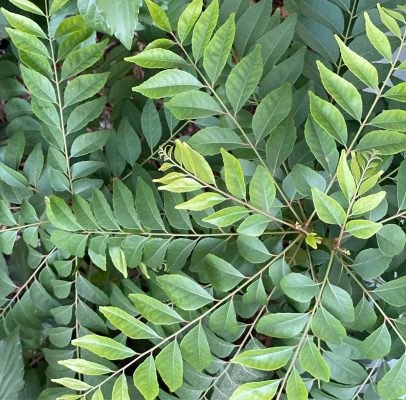
Reviving Your Curry Leaf Plant: Tips and Tricks for Dealing with Repeated Drying
If your curry leaf plant keeps drying up despite your best efforts, there are several strategies you can try to revive it. As a gardener, you’ve likely planted curry leaf in your home garden with the intention of keeping it lush and vibrant. However, even after proper care, some may wonder what to do if their curry leaf plant continues to dry up. In this article, we’ll delve into the various reasons why your curry leaf plant might be drying up, and explore solutions to help prevent it from happening again.
Curry leaf plants are cherished for their aromatic leaves, which add depth and flavor to countless dishes in South Asian and Southeast Asian cuisines. However, nurturing these plants can sometimes be challenging, especially if they repeatedly dry up. If you’ve found yourself struggling with a curry leaf plant that just won’t thrive, don’t despair. In this guide, we’ll explore various strategies and techniques to revive your curry leaf plant and keep it flourishing for years to come.
Understanding the Curry Leaf Plant:
Before delving into revival strategies, it’s essential to understand the needs of the curry leaf plant (Murraya koenigii). Native to India, Sri Lanka, and other parts of Asia, this tropical plant thrives in warm, humid conditions. It belongs to the Rutaceae family and is characterized by its glossy, aromatic leaves that are rich in essential oils.
Curry leaf plants prefer well-draining soil with plenty of organic matter. They require moderate watering, allowing the soil to dry out slightly between waterings. Additionally, they thrive in bright, indirect sunlight but can tolerate some direct sunlight, especially in the morning.

Also Read This : 7 Vital Tips for Starting Your Home Garden Successfully
Common Causes of Drying:
Several factors can contribute to a curry leaf plant drying up repeatedly. Understanding these factors is crucial for implementing effective revival strategies:
Improper Watering:
Overwatering or underwatering can both lead to stress and eventual drying of the plant. It’s essential to strike the right balance and adjust watering according to environmental conditions and the plant’s needs.
Inadequate Sunlight:
Insufficient light can weaken the plant and hinder its growth. Curry leaf plants require adequate sunlight to photosynthesize and produce healthy foliage.
Poor Soil Quality:
Soil that lacks nutrients or doesn’t drain well can stunt the growth of curry leaf plants and make them susceptible to drying out.
Pests and Diseases:
Infestations of pests like aphids or diseases such as fungal infections can weaken the plant and cause leaf yellowing and drying.
Also Read This : Say Goodbye to Soil Woes: 7 Indoor Plants Thriving in Water!
Revival Strategies:
Now that we’ve identified some common causes of drying, let’s explore effective strategies for reviving your curry leaf plant:
Assess Watering Practices:
Start by evaluating your watering routine. Ensure that you’re not overwatering, as excessive moisture can lead to root rot and eventual death of the plant. Conversely, make sure the plant isn’t being underwatered, which can cause wilting and drying of the leaves. Adjust your watering schedule based on the plant’s moisture needs and environmental conditions.

Also Read This : Polyhouse Farming Unveiled: Your Complete Guide to Success
Optimize Sunlight Exposure:
Place your curry leaf plant in a location where it receives bright, indirect sunlight for at least six hours a day. If indoor conditions are insufficient, consider supplementing with artificial grow lights, especially during the winter months.
Repot with Nutrient-Rich Soil:
If your curry leaf plant is struggling due to poor soil quality, consider repotting it with a well-draining potting mix enriched with organic matter. Choose a pot with adequate drainage holes to prevent waterlogging.
Prune Dead or Dying Foliage:
Remove any yellowing or dried-up leaves from the plant using clean, sharp scissors or pruning shears. This will not only improve the plant’s appearance but also encourage new growth.
Address Pest and Disease Issues:
If you suspect pest infestation or disease, take prompt action to address the problem. Depending on the severity, you may need to use organic pesticides or fungicides to control the issue. Regularly inspect your plant for signs of pests or diseases and intervene early to prevent further damage.
Provide Adequate Humidity:
Curry leaf plants thrive in humid conditions. If you live in a dry climate or have indoor heating that dries out the air, consider increasing humidity around the plant. You can do this by misting the foliage regularly or placing a tray filled with water and pebbles beneath the pot to create a humid microclimate.
Fertilize Regularly:
Feed your curry leaf plant with a balanced, water-soluble fertilizer during the growing season to provide essential nutrients for healthy growth. Follow the manufacturer’s instructions for dilution and frequency of application.
Also Read This : Bright Sunshine and Less Care: 7 Must-Have Summer Flowering Plants for Your Garden!
Reviving a curry leaf plant that has dried up repeatedly requires patience, diligence, and a proactive approach. By addressing underlying issues such as improper watering, inadequate sunlight, poor soil quality, and pest or disease problems, you can give your plant the best chance of recovery. Remember to observe your plant closely and make adjustments as needed to create optimal growing conditions. With the right care and attention, your curry leaf plant can thrive and continue to grace your dishes with its aromatic foliage for years to come.




